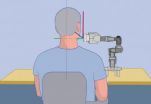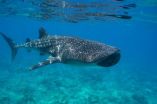(Press-News.org) A team of researchers from the Virginia Tech-Wake Forest University School of Biomedical Engineering and Sciences have developed a new way of using electricity to open the blood-brain-barrier (BBB). The Vascular Enabled Integrated Nanosecond pulse (VEIN pulse) procedure consists of inserting minimally invasive needle electrodes into the diseased tissue and applying multiple bursts of nanosecond pulses with alternating polarity. It is thought that the bursts disrupt tight junction proteins responsible for maintaining the integrity of the BBB without causing damage to the surrounding tissue. This technique is being developed for the treatment of brain cancer and neurological disorders, such as Parkinson's disease, and is set to appear in the upcoming issue of the journal Technology.
The BBB is a network of tight junctions that normally acts to protect the brain from foreign substances by preventing them from leaking out of blood vessels. However, it also limits the effectiveness of drugs to treat brain disease. Temporarily opening the BBB is a way to ensure that drugs can still be effective.
For the treatment of brain cancer, "VEIN pulses could be applied at the same time as biopsy or through the same track as the biopsy probe in order to mitigate damage to the healthy tissue by limiting the number of needle insertions," says Rafael V. Davalos, Ph.D, director of the Bioelectromechanical Systems Laboratory at Virginia Tech.
Additionally, the group shows that VEIN pulses can be applied without causing muscle contractions, which may dislodge the electrodes and require the use of a neuroblocker and general anesthesia. According to Christopher B. Arena, Ph.D., co-lead author on the paper with Paulo A. Garcia, Ph.D. and Michael B. Sano, Ph.D., "the fact that the pulses alternate in polarity helps to avoid unwanted, electrically induced movement. Therefore, it could be possible to perform this procedure without using a neuroblocker and with patients under conscious sedation. This is similar to how deep brain stimulation is implemented clinically to treat Parkinson's disease."
The team now plans to translate the technology into clinical applications through a university spin-out company, VoltMed, Inc.
INFORMATION:
Additional co-authors of the Technology paper are John D. Olson from the Center for Biomolecular Imaging at Wake Forest, and Thomas Rogers-Cotrone and John H. Rossmeisl Jr. from the Neurology and Neurosurgery department at the Virginia-Maryland Regional College of Veterinary Medicine.
This research was supported in part by grants from the National Science Foundation (CBET 1055913 and I-Corps 1265105), the Golfers Against Cancer, and the Center for Biomolecular Imaging in the Wake Forest School of Medicine.
Corresponding authors for this study in Technology are John H. Rossmeisl Jr., jrossmei@vt.edu and Michael B. Sano, sano@vt.edu. The study can be found at the following URL, http://www.worldscientific.com/doi/abs/10.1142/S2339547814500186.
Focal blood-brain-barrier disruption with high-frequency pulsed electric fields
2014-08-12
ELSE PRESS RELEASES FROM THIS DATE:
A highly sensitive microsphere-based assay for early detection of Type I diabetes
2014-08-12
A team of researchers from the Center for Engineering in Medicine at the Massachusetts General Hospital have developed a novel fluorescence-based assay for sensitive detection of antibodies within microliter volume serum samples. This new assay is at least 50 times more sensitive than the traditional radioimmunoassay (RIA), which is the gold standard currently used in the clinic. This new technology is particularly attractive for immunological assays as it allows: 1) use of very small volumes of sample reagents (5 ¦ÌL), and 2) use of traditional analytical systems such ...
Biomarker could reveal why some develop post-traumatic stress disorder
2014-08-12
(NEW YORK – August 11) Blood expression levels of genes targeted by the stress hormones called glucocorticoids could be a physical measure, or biomarker, of risk for developing Post-Traumatic Stress Disorder (PTSD), according to a study conducted in rats by researchers at the Icahn School of Medicine at Mount Sinai and published August 11 in Proceedings of the National Academy of Sciences (PNAS). That also makes the steroid hormones' receptor, the glucocorticoid receptor, a potential target for new drugs.
Post-Traumatic Stress Disorder (PTSD) is triggered by a terrifying ...
Robotic-assisted imaging: from trans-Atlantic evaluation to help in daily practice
2014-08-12
While in Germany, Partho P. Sengupta, MD, of Icahn School of Medicine at Mount Sinai used a computer to perform a robot-assisted trans-Atlantic ultrasound examination on a person in Boston. In another study Kurt Boman, MD, of Umeå University in Sweden in collaboration with Mount Sinai, showed how a cardiologist's video e-consultation, coupled with a remote robot-assisted echocardiogram test, dramatically reduces the waiting time for a diagnosis faced by heart failure patients who live in a rural communities far from the hospital from nearly four months to less than one ...
The Maldives and the whale shark: The world's biggest fish adds value to paradise
2014-08-12
They are the largest fish in the world but the impact of this majestic and charismatic animal on the economy of the island nation of the Maldives was largely unknown. A new study by scientists of the Maldives Whale Shark Research Programme (MWSRP) reveals that a small group of whale sharks in a single Maldivian Atoll accounts for nearly 3% of the global shark ecotourism and nearly half that of the Maldives'.
"The Republic of Maldives hosts one of few known year round aggregation sites for whale sharks", said James Hancock co-author and a director of MWSRP. "We have seen ...
Is empathy in humans and apes actually different?
2014-08-12
Whether or not humans are the only empathic beings is still under debate. In a new study, researchers directly compared the 'yawn contagion' effect between humans and bonobos (our closest evolutionary cousins). By doing so they were able to directly compare the empathic abilities of ourselves with another species, and found that a close relationship between individuals is more important to their empathic response than the fact that individuals might be from the same species.
The ability to experience others' emotions is hard to quantify in any species, and, as a result, ...
Sniffing out billions in US currency smuggled across the border to Mexico
2014-08-12
SAN FRANCISCO, Aug. 12, 2014 — Criminals are smuggling an estimated $30 billion in U.S. currency into Mexico each year from the United States, but help could be on the way for border guards, researchers will report here today. The answer to the problem: a portable device that identifies specific vapors given off by U.S. paper money.
They will present the new research at the 248th National Meeting & Exposition of the American Chemical Society (ACS), the world's largest scientific society. The meeting features nearly 12,000 reports on new advances in science and other ...
Could hemp nanosheets topple graphene for making the ideal supercapacitor?
2014-08-12
SAN FRANCISCO, Aug. 12, 2014 — As hemp makes a comeback in the U.S. after a decades-long ban on its cultivation, scientists are reporting that fibers from the plant can pack as much energy and power as graphene, long-touted as the model material for supercapacitors. They're presenting their
research, which a Canadian start-up company is working on scaling up, at the 248th National Meeting & Exposition of the American Chemical Society (ACS), the world's largest scientific society.
The meeting features nearly 12,000 presentations on a wide range of science topics and ...
Stinky gases emanating from landfills could transform into clean energy
2014-08-12
SAN FRANCISCO — A new technique that transforms stinky, air-polluting landfill gas could produce the sweet smell of success as it leads to development of a fuel cell generating clean electricity for homes, offices and hospitals, researchers say. The advance would convert methane gas into hydrogen, an efficient, clean form of energy.
The researcher's report is part of the 248th National Meeting of the American Chemical Society (ACS), the world's largest scientific society.
The meeting, attended by thousands of scientists, features nearly 12,000 reports on new advances ...
Climate change, predators, and the trickle down effects on ecosystems
2014-08-12
Predators play important roles in maintaining diverse and stable ecosystems. Climate change can push species to move in order to stay in their climatic comfort zones, potentially altering where species live and how they interact, which could fundamentally transform current ecosystems.
A symposium focusing on climate's effects on predators—causing cascading effects on whole ecosystems -- will take place on Tuesday, August 12th during the Ecological Society of America's 99th Annual Meeting, held this year in Sacramento, California.
There will be "winners" and "losers" ...
Blacks, women face greater burden from CVD risk factors
2014-08-11
The impact of major cardiovascular risk factors combined is greater in women than men and in blacks than whites. While the gender gap may be narrowing, differences by race may be increasing, according to new research in the American Heart Association journal Circulation.
"We've been targeting traditional risk factors in public health campaigns for many years," said Susan Cheng, M.D., M.P.H., study lead author and Assistant Professor of Medicine at Brigham and Women's Hospital in Boston, Mass. "We wanted to take a look at how well we've been doing over time at keeping ...





